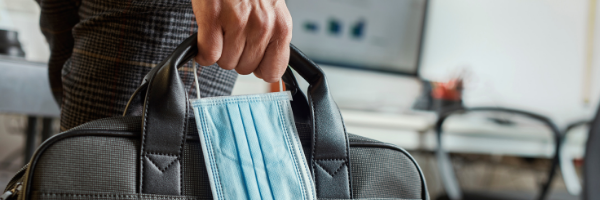Returning to Work 2021 Guide
As we find ourselves emerging from Level 5 restrictions around the Country, many sectors can once again reopen their businesses. We are receiving many queries regarding the Return to Work Protocols.
Managing the wellbeing and safety of employee’s will be a priority for Employers. Enforcing social distancing will be paramount to ensure businesses successfully transition back into the workplace. Please find below links to documents which we believe you may find useful:
Return to work form
1.When an employee has been absent for a number of days, ensure they fill out the ‘Return to Work Form’ upon their return. This is a self-declaration form that can be used as conversation piece, ensure compliance and distribute the responsibility of everyone’s wellbeing onto the employee, not just the business.
Risk Assessment
2. Conduct risk assessments for both the business and employees. I have attached sample assessments above. Employers have specific duties to ensure the safety, health and welfare at work of all employees. You should attempt to minimise or eradicate as much Covid-19 transmission risk as possible. Your Health & Safety Provider can advise you further on these.
Safety Measures
3. On foot of the risk assessments, you can implement as much safety measures as possible i.e. social distancing, face masks, hand sanitizers, staggered break times/shift times, to name a few.
Healthy and Safety representative
4. An Employer must appoint at least one lead work representative. This employees’ role will be to work collaboratively with the Employer, assisting in the implementation of the control measures and monitoring the adherence to such measures to prevent the spread of Covid-19.
Posters
5. There are posters available to download which can be distributed on your premises regarding Covid-19, which can be found here.
Covid-19 response plan
Employers must devise and/or update a business Covid-19 Response Plan.
Social distancing
Keep a contact log of all guests/visitors that enter your premises and stay for longer than 15 minutes. Also, keep a log of employees who are in close proximity of each other for longer than 15 minutes.
Training and guidance during COVID
Employers should educate and train all employees on the Covid-19 situation. This training should include the latest up-to-date advice and guidance on public health: what an employee should do if they develop symptoms of Covid-19.
More information on returning to work can be found here
Staying on top of changes and updates to Employment Law can be challenging. Not to mention costly and time-consuming. We provide you with the resources to ensure you remain fully HR compliant. Contact us today!
Get in touch with us at The HR Company
No Obligation Quote
We have been in business over 20 years providing HR Solutions to more than 1000 businesses in Ireland. Our HR expertise helps businesses to remain compliant and reduce the risk of future litigation.
Request a no-obligation quote or book your free consultation by filling this form. One of our HR Advisors will contact you as soon as possible. If you wish immediate response please contact us on 01 2911 850.
We can help your business to go through COVID-19 in the best way possible. Still unsure? See what our clients have to say…



Leave A Comment